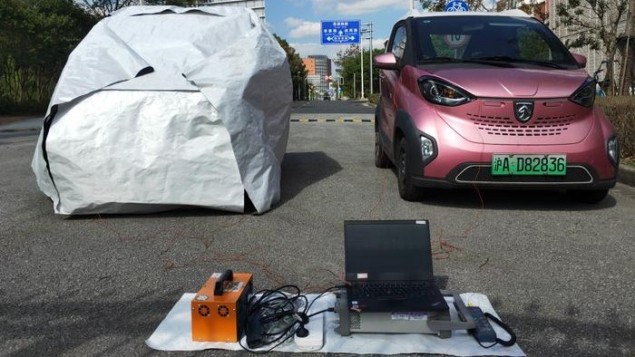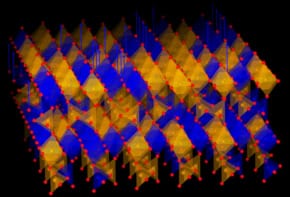
A thermal cloak that can radiatively cool objects in hot weather, and keep them warm when it is cold has been developed by researchers in China. Kehang Cui at Shanghai Jiao Tong University and colleagues say that their new technology offers a promising way to regulate temperature without the input of energy.
The heating and cooling of buildings accounts for about 20% of global energy consumption. As climate change escalates the frequency and severity of extreme weather, temperature-control systems will be stretched further in the coming decades.
As a result, researchers are keen on creating low-cost, carbon-neutral technologies that can regulate temperatures passively, without drawing from a power supply.
Working both ways
An important challenge in creating such systems is that conventional heat-regulating materials cannot switch their radiative behaviour automatically. For example, some cooling materials reflect solar radiation, while emitting mid-infrared radiation in the “transparency window”. This window is part of the electromagnetic spectrum where radiation is not reflected or absorbed by the atmosphere and this emission will have a cooling effect. However, these materials will also emit radiation in cold temperatures, discarding precious heat.
Now, Cui and colleagues have created a new “Janus thermal cloak” (JTC), which regulates temperature at all ambient temperatures. “The cloak is composed of an all-ceramic, radiative-cooling phononic metafabric facing the sky, and a photon-recycling foil facing inside,” Cui explains.
The team chose these materials for their high strength and stability, low cost, and excellent resistance to fire and corrosion. As a result, they say that the cloak is easy to manufacture, and resilient against harsh outdoor environments.
Made from an aluminium alloy, the JTC’s inner foil has a high thermal conductivity, but is almost perfectly reflective to radiation across the entire infrared spectrum – trapping heat inside. The researchers say that materials including ceramics, copper, and stainless steel could also be used, depending on material availability.
Hyperbolic material
The JTC’s sky-facing metafabric comprises a scaffold woven from braided silica fibres that is bonded to a 2D hexagonal boron nitride crystal. This creates a “hyperbolic” material, whose response to incident electromagnetic waves depends on the angle of their approach.
In contrast to the foil beneath, the metafabric has an extremely low thermal conductivity, but is highly reflective to solar radiation – covering the visible and near-infrared range. This is due to light-matter interactions inside the metafabric, which causes mid-infrared radiation to scatter around the axes of its silica fibres. In the transparency window, the metafabric re-emits virtually all of the radiation it absorbs, without transferring it to the foil.
As a result, heat within the cloaked object tends to be retained but radiation from the environment will not tend to heat the object.

New elastocaloric cooling system shows promise for commercial use
Cui’s team tested the JTC on electric cars parked on the streets of Shanghai, and compared their cabin temperatures with uncovered cars. In the experiment, the covered cars remained some 8°C cooler than the uncovered cars on hot summer days, and 6.8 °C warmer on cold winter nights.
“This is the first time that we could achieve warming above the ambient temperature by almost 7 °C during winter nights,” Cui describes. “This is also kind of surprising to us – there’s no energy input or sunshine and we can still get warming.” This passive regulation is especially important for electric cars, since their batteries and electrical components cannot readily withstand extreme swings in temperature.
For Cui and colleagues, the next steps will be to upscale their design – possibly leading to a diverse array of exciting practical applications. “The thermal cloak is reliable, truly passive, and does not involve phase change or moving parts,” he continues. “This makes it promising for use in real-world applications in buildings, vehicles, and even extra-terrestrial environments.”
The research is described in Device.



